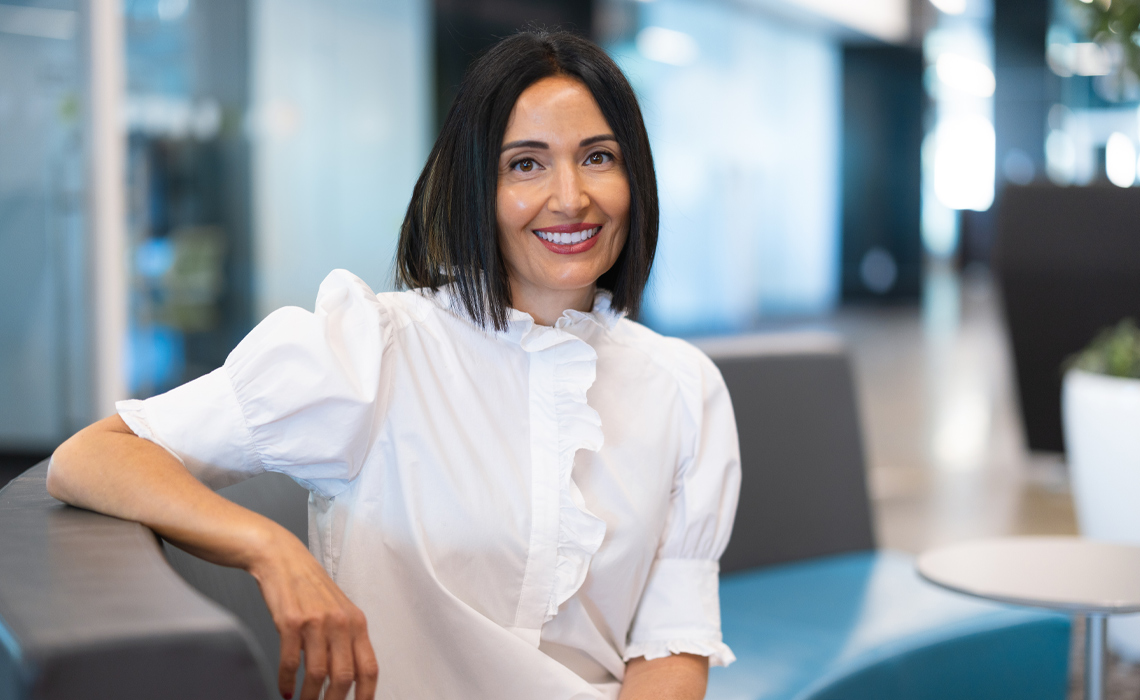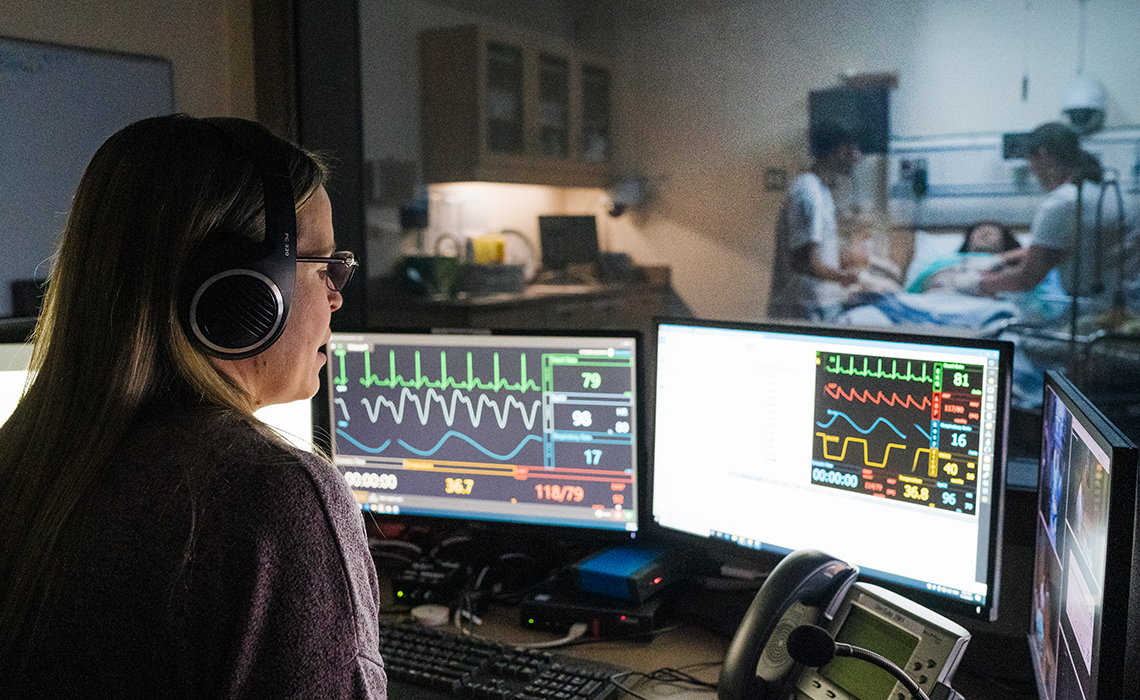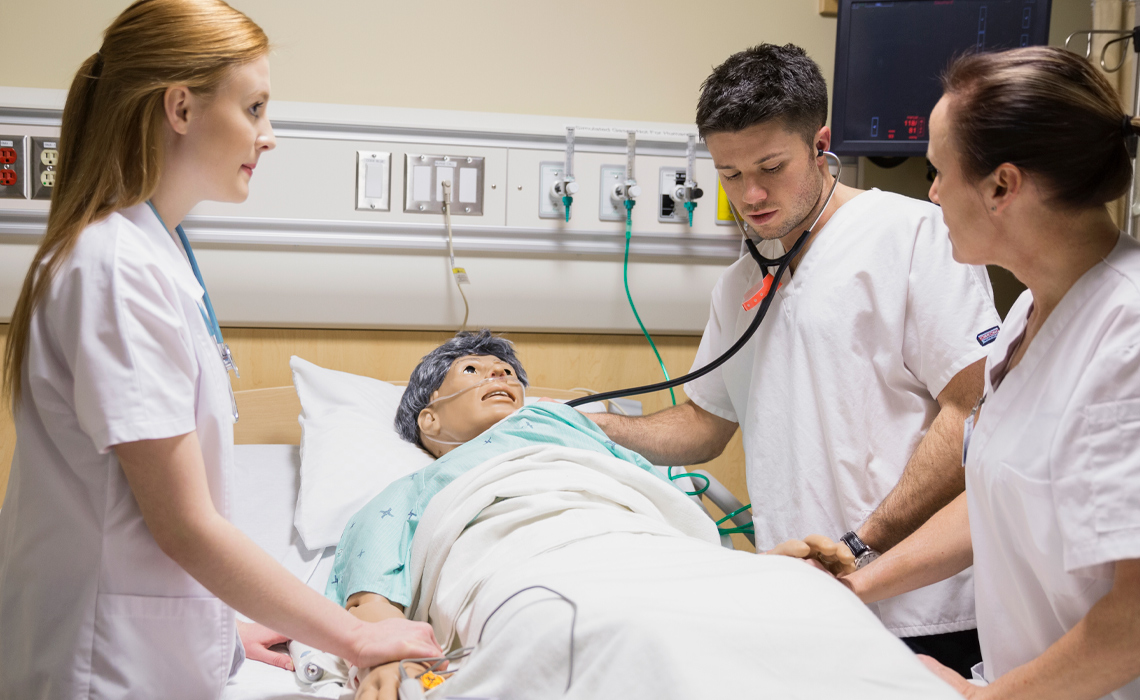Simulated scenarios, real-world effects
If a situation is simulated, can it still cause real stress?
That’s the question Dr. Giuliana Harvey, PhD, asked in a recent research project, titled “Exploring the meaning of psychological harm experienced by undergraduate nursing students in simulation: A hermeneutic study.” The study was conducted as part of a year-long fellowship from the International Nursing Association for Clinical Simulation and Learning, which is dedicated to developing leaders in health-care simulation and providing opportunities to conduct research, share insights and advance industry best practices.

Harvey is currently the acting vice-dean of the Faculty of Health, Community and Education and an associate professor in the School of Nursing and Midwifery. She has been involved in health-care simulation at MRU since 2010 and saw an opportunity to build on her own previous research into the health and well-being of nursing students in clinical environments. If students experience stress and trauma in clinical environments, could the same hold true for simulated scenarios?
MRU’s Health Simulation Learning Centre (HSLC) is designed to allow nursing students and those from other departments in the Faculty of Health, Community and Education to practice real-world situations — often high-stakes — without the added stress of a high-stakes outcome.
“It allows us to standardize students’ learning experiences and allow them to safely practice difficult situations and apply complex clinical judgement without harming a real patient,” says Dr. Cathy Carter-Snell, PhD, interim director of the HSLC and professor in the School of Nursing and Midwifery.
Simulation is becoming a core part of health-care education. In nursing, it’s been shown that simulation can replace up to 50 per cent of clinical hours, with participating students performing as well — or better — on licensing exams such as the National Council Licensure Examination (NCLEX).
Freedom to explore
The HSLC creates scenarios that nursing students might encounter in a clinical setting, but may not encounter during their training. State-of-the-art technology, including artificial intelligence and lifelike mannequins, allow the scenarios to unfold according to the students’ response, and they can apply their learning without the fear of causing harm to a live patient.
“It gives learners the freedom to explore solutions without worrying about consequences and real-world risks,” Harvey says. “It’s an opportunity to try new things in a safe space without feeling judged or penalized.”

Simulation facilitators and technicians in the HSLC work hard to create a safe space for students to test their knowledge and experiment with solutions, and sometimes the results can be surprising even to seasoned practitioners.
“What Dr. Harvey and I thought would be a critical incident in our day was not what students described,” Carter-Snell says.
What’s normal for an expert is still new to a novice, she adds, and nurses deal with a range of physical, emotional and interpersonal issues in a day. These stressors can all take a toll — even in a simulated environment — and understanding them means instructors can help students either avoid harm during training, or build resiliency.
Building on previous work
The research question arose in part because of a previous study Harvey conducted, which examined critical events or traumatic situations that undergraduate nursing students experience in clinical environments.
“I became curious — if the clinical environment is an experiential learning environment, where students can experience traumatic events while they’re learning, is the same thing possible in simulation?” she says. “We strive to create an environment of safety, and that’s where I started to wonder what harm looks like. If students can experience it in a clinical setting, then can they also experience it in a simulation, where we’re putting students into experiences that are like real-world experiences?”

A well-rounded team of researchers and a current MRU alumnus joined Harvey on the project, bringing expertise in simulation, education and trauma-informed care. The team included Carter-Snell, Dr. Amy Daniels, PhD (University of Maryland), and Dr. Semiha Asli Bozkurt, PhD (Massachusetts College of Pharmacy and Health Sciences University). Kaitlin Berlinguette, a recent alumna and former MRU psychology honours student, acted as research assistant.
As always, students play a significant role in shaping the program and in the research itself. As an undergraduate university, MRU offers students like Berlinguette the chance to gain research experience that’s not often available to them at graduate universities.Harvey continues to build on this work, applying the learning to real world situations in order to reduce psychological harm. This includes publishing recommendations on the role of peer support in clinical education, and a recently submitted manuscript on trauma-informed principles in simulation education.
“Groundbreaking” findings
The findings, published in leading international journal Nurse Education Today, have been called “powerful” by editor-in-chief Dr. Gemma Stacey, PhD.
"This study courageously explores the shadow side of simulation education that we've perhaps been reluctant to examine," writes Stacey in a post on LinkedIn. “[This is] essential reading for anyone involved in experiential learning.”
The recognition builds on the success of Harvey’s previous project, in which she shared an e-poster presentation in June at the International Council of Nurses Congress in Helsinki, Finland. The abstract, which she authored with Carter-Snell and Mohamed El Hussein, MRU’s AgeCare Research Chair in Aging, was selected from a pool of 10,000 submissions.
“A number of researchers have looked at safety in simulation, but very few have looked at harm,” Carter-Snell says. She believes the study is groundbreaking, as is Harvey’s work in applying trauma-informed principles to simulation education.
Closer to home, the research will help inform simulation training for students in the MRU nursing program, ensuring instructors are watching for any signs of stress or trauma in students. It has also made them more aware of how instructors can help students navigate stressful situations — and how students can help each other — arming everyone with real-world skills that students can use in any scenario.

